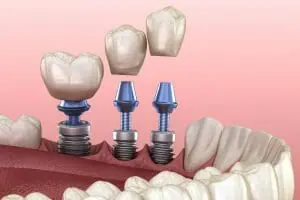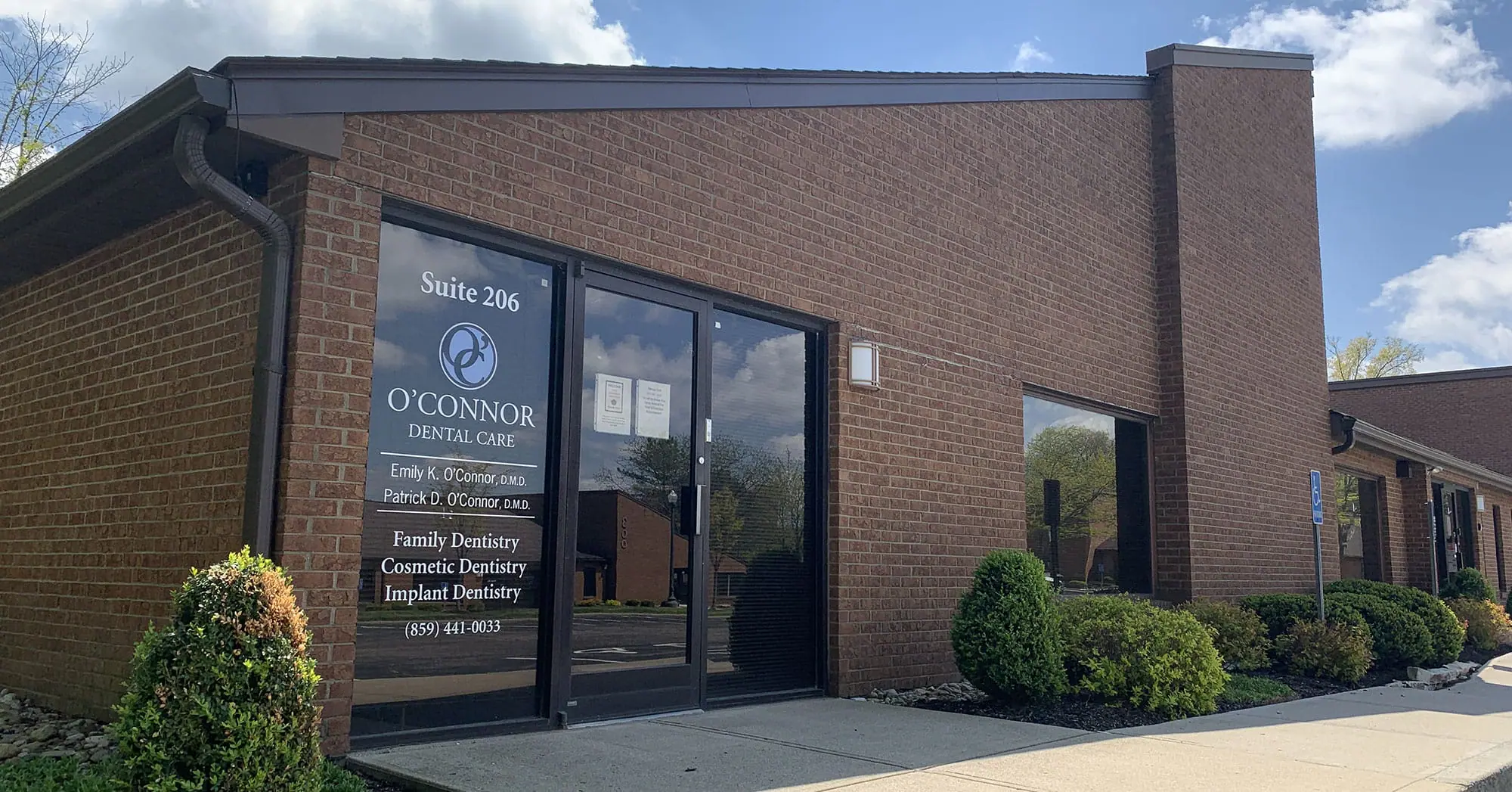Smile Pretty? Yes, You Can!

Smile! It’s an often-heard suggestion because a smile is a nearly universal language. But what if your smile isn’t as attractive as you’d like it to be? O’Connor Dental Care can help.
In addition to daily brushing and flossing, along with regular check-ups and cleanings by your dental team, two procedures can turn a so-so smile into a so nice one: bonding and veneers. Both can cover chipped, cracked, broken, misaligned, or discolored teeth with a surface that is indistinguishable from your natural teeth, and both can last far longer than a dental cleaning.
Simple and Successful: Dental Bonding
Bonding is the simpler of the two procedures, as it is less involved than getting a veneer and usually completed in a single dental visit. Bonding is also referred to as bonded restoration because it builds upon the damaged or discolored tooth without changing it. Bonding can hide chips or cracks, fill in gaps between teeth, even build up a broken tooth, or hide roots revealed by receding gums. It can even be applied to a tooth that has decayed.
Bonding uses dental resin mixed to a shade that mimics the color of your own teeth, so the improved smile that you show to the world looks as if you were born with it. The color-matched resin is applied directly to a tooth and hardened using a specialized light. Once hard, it is shaped to match the natural shape of your non-bonded teeth. Dental bonding really is as simple as it sounds. And though it’s simple, when done well, it can last more than a few years.
Porcelain and Permanent: Dental Veneers
Another procedure for improving the appearance of teeth is a dental veneer, a wafer-thin covering made of porcelain that fits over the front surface of a tooth like a pair of good fitting jeans. While the goal of a veneer is the same as that of bonding, the process is more complex.
Porcelain veneers require preparation and usually at least two appointments. In the first visit, your dentist reshapes the tooth’s surface (removing enough enamel to match the thickness of the veneer) and takes an impression of the targeted tooth. This impression is sent to a dental lab where your veneer will be created, which can take several weeks. In the second visit, the veneer will be applied to your tooth. For the veneer to fit perfectly and look as natural as possible, it may need to be removed and adjusted several times before it is set. Best of all, if you take good care of it, a veneer can last for as long as 15 years.
Comparing the Two: Pros and Cons
Not everyone is a good candidate for bonding or veneers. And for any individual, bonding and veneers are not equally appropriate. Each procedure is different, and knowing the difference will help you make an informed decision about your oral health. Let’s look at the key factors you’ll want to consider in making your choice:
- Time. One of the best things about bonding is that it can be usually be done in a single dental visit. Veneers always require two visits, and sometimes three. For a painful, broken tooth, or a dazzling smile for a special occasion, a one-stop procedure could be the better call.
- Cost. It’s always a factor, isn’t it? As you might expect, bonding is usually significantly less expensive than veneers, especially for just one or two teeth. Veneers require the skills and equipment of a dental lab in addition to that of a dentist. However, the difference lessens as the amount of work involved increases. For more than a few teeth, be sure to compare costs, as in some cases veneers may be worth the extra bit more.
- Durability/Longevity. Whether your need is cosmetic or functional, whatever you have done should last as long as possible. Much of the durability of these coverings depends on the material used. Bonding uses a resin that is brushed onto a tooth. That’s why it can be done in a single session, and why, if it chips or discolors, it’s quick and easy to repair. Veneers, on the other hand, are made of porcelain and are custom built to fit on the front of a tooth. Forever. Veneers are permanent. Bonding is not.
- Looks. Both bonding and veneers will provide “new” teeth that look just like all the rest. And like natural teeth, they react to what touches them. Bonding is prone to staining over the years (and may need to be redone); porcelain is virtually stainless. Both can chip or break, but bonding can be repaired. If a veneer cracks, the only fix is a crown. And if your teeth are significantly stained or discolored, a veneer will cover that better than bonding.
- Maintenance. This is the one place where veneers and bonding are equal. To keep them looking their best, a good dental hygiene routine is crucial. Just like your natural tooth, bonded teeth or veneers need daily brushing and flossing, plus regular professional check-ups and cleanings. And like natural teeth, to keep them from chipping, cracking, or staining it’s best to avoid hard food, such as hard candy, nuts, and crunchy snacks; dark beverages, such as red wine, some fruit juices, and colas; chewing ice; and using tobacco.
If you think bonding or veneers are for you, be sure to start with a consultation to find out if you’re a candidate for restoration and to help you decide which procedure would be best for you. Be honest about how much effort and time you’re willing to put in, as well as your dental hygiene routine as it is right now. (Changing habits is difficult, so be truthful about how well you usually care for your teeth).
The choice is yours, but the professionals at O’Connor Dental Care are always available to help you determine which choice you’ll be happiest with.











